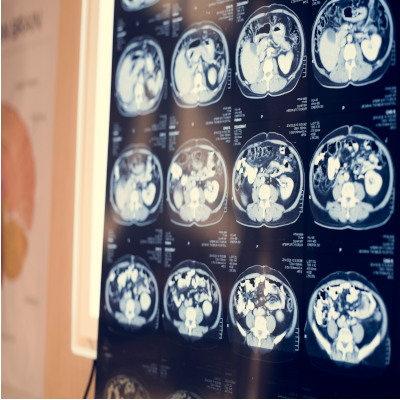From my previous blogs, you know that I am a huge proponent of computer-assisted coding (CAC). Some of the key goals of CAC utilization are increased productivity, maximizing reimbursement and ensuring compliance. Recently my team was asked to review and revise a 3M published article titled “Top 10 radiology coding mistakes.” I want to share some of the great information in this article as it may help you in improving documentation and making the most of your CAC system.
Did you know that coding errors cost the average radiology practice the equivalent of a full-time coding professional’s salary? The most common reasons for errors are related to poor documentation. Based on 3M research, we have compiled the following list of documentation issues. Let’s take a deeper look into these issues and what you can do to improve your documentation: 
- Enumerating body parts
- Text does not match header
- Inconsistent view counts
- Weak, vague or absent clinical indications
- Equivocal language
- Protocols, completes, series
- Permanent images for ultrasound guidance
- 3D workstation on reconstructions
- Screening vs. diagnostic conditions
- Vascular interventional radiology
ENUMERATING BODY PARTS
Enumerating body parts refers to exams where physicians omit necessary components to qualify for a complete exam. The most common applicable exams are abdominal ultrasound, retroperitoneal ultrasounds and OB ultrasounds. Often physicians are viewing the necessary anatomy but are not documenting it within the body of the report. It is not only important that coders are educated in the required components, but you must also ensure that your physicians are engaged in a clinical documentation plan to make sure they are aware of the required documentation for each exam.
TEXT DOES NOT MATCH HEADER, PROTOCOLS, COMPLETES & SERIES & INCONSISTENT VIEW COUNTS
Inconsistent view count’s and text not matching the header are similar and happen when the procedure title or order differ from what was performed and listed in the technique. This can also happen when the radiologist determines a different exam is needed for optimal assessment of the patient’s reason for exam. Protocols, completes, and series issues occur when the referring physicians’ orders are in short hand or utilize ambiguous language. All three of these create a risk for over- and under-coding as well as loss of revenue. Establishing a front desk protocol to verify or update orders per the exam performed can prevent future compliance risks and a loss of revenue.
WEAK, VAGUE or CLINICAL INDICATIONS & EQUIVOCAL LANGUAGE
Weak, vague or absent clinical indications happen when the referring physician orders exams to rule out a specific diagnosis. Equivocal language is when the radiologist uses phrases such as “consistent with,” “suggestive of,” “evaluate for,” “possible,” or “compatible with” as part of the Indication or Impression and does not include signs and symptoms or definitive impression language. These phrases can imply lack of certainty and cause coders to be unable to assign an appropriate diagnosis code. These issues, whether alone or combined, result in a loss of revenue because it is not possible to submit a valid ICD-10 code for a claim containing equivocal language. Referring physicians should be trained to document signs, symptoms, or known conditions related to the order. Front desk staff can also be trained to call and ask for an updated order with the medically necessary information to support the exam.
PERMANENT IMAGES FOR ULTRASOUNDS GUIDANCE
Although it may seem simple, the documentation of permanent images for ultrasound guidance is required. Coders are on the frontline when it comes to preventing the filing of incorrect claims. Educating coders on the use of 76942 in the absence of this documentation is a compliance must. Also, educating physicians to use key phrases such as “permanent images show” can prevent a loss of revenue caused by an unexpected audit.
3D WORKSTATION ON RECONSTRUCTIONS
CPT codes 76376 or 76377 are reported with MRI, CT, US or other tomographic modalities when 3D renderings are utilized to better visualize the anatomy. There are a variety of documentation statements for 3D including MIPS, coronal sagittal axial and 3D recon. These codes also require documentation of an independent workstation used for postprocessing. Additionally, image postprocessing under concurrent supervision is a requirement for payment. It is common for coders to miss this coding opportunity or use the incorrect code due to documentation variances. It is important to ensure your templates contain the necessary documentation to support these codes.
SCREENING VS DIAGNOSTIC CONDITIONS
Screening vs. diagnostic issues occur when ambiguous orders do not indicate whether a procedure is for diagnostic or screening purposes. This is most commonly seen with screening mammograms. X-ray technicians often mistakenly list patients with breast augmentation as diagnostic due to the additional views required. It is important to understand that, unless the patient has signs, symptoms, or known conditions, the exam needs to remain screening. Although this error does not result in great loss of revenue, it does create a compliance risk for your practice and can result in unnecessary charges for your patients.
VASCULAR INTERVENTIONAL RADIOLOGY
Vascular interventional radiology requires some of the most specific and comprehensive documentation of all radiology coding. Documentation requirements for proper coding include access site, route of catheter, injection sites and each vessel imaged. Unfortunately, when documentation is inadequate coders are forced to make assumptive coding decisions. This creates a great compliance risk, since coders cannot assume certain vessels were imaged, as they may not be correct or defendable in the medical record.
I think we can all agree on the lesson here: Documentation education is key. Ensuring that your coding staff are not only aware of the necessary documentation requirements but also establishing an education plan for your physicians will help you ensure appropriate revenue and reduce compliance risk.
The post Radiology documentation: Maximizing revenue and reducing risk appeared first on 3M Inside Angle


